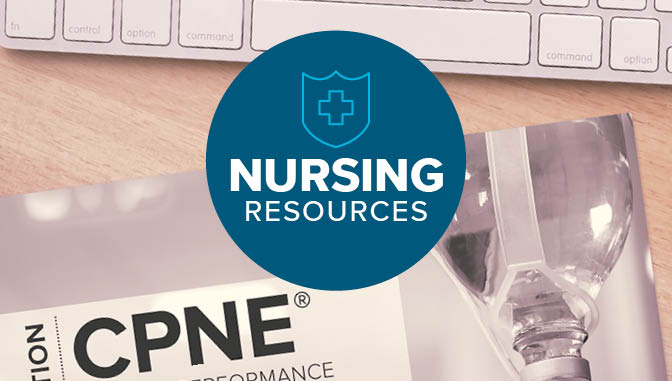Special Double Tutorial Feature: NUR 3014 Critical Thinking and the Nursing Process and NUR 702 Navigating the CPNE

As an associate degree in nursing student, you are required to take nursing theory components to prepare you for demonstrating proficiency in nursing care during the Clinical performance in Nursing Examination (CPNE). There are two tutorials that you should be aware of that can improve your success. NUR 3014: Critical Thinking and the Nursing Process Online Tutorial and NUR 702: Navigating the CPNE Online Tutorial are great resources to consider when you need some extra practice and while you are preparing for the CPNE.
All students in the associate degree in nursing program have access to NUR 3014: Critical Thinking and the Nursing Process Tutorial. This self-paced learning tutorial includes resources to help students develop and apply skills they may struggle with, such as math calculations or applying the “Nursing Code of Ethics” to a complex patient. A significant focus of the tutorials is application of critical thinking and the nursing process. NUR 3014 provides narrated resources and audio files to help students think critically with the RN perspective. The tutorial contains three modules: Problem Solving, Critical Thinking, and The Nursing Process, with each module discussing important skills and competencies the registered nurse needs to be successful in the dynamic healthcare environment.
“The nursing process is the blueprint for all nursing care,” says Karla Duffy, faculty program director for the associate degree in nursing program. The steps in the nursing process are assessment, diagnosis, planning, implementation, and evaluation, and the NUR 3014 Online Tutorial helps students practice and apply this important process. Within the modules are activities that students can practice developing a plan of care for different patients across the life span. There is also a case study for students to practice putting all of the pieces together.
The tutorial is so beneficial that Duffy uses it in her course, NUR 104 Essentials of Nursing Care: Health Safety. “In NUR 104, students are required to go to NUR 3014 to complete their week I discussion because I want them to know that it’s here and I want them to use it as a resource throughout their educational journey,” she says.
NUR 702, Navigating the CPNE Online Tutorial, is similar to NUR 3014 in structure, but NUR 702 is only available to students when they are CPNE eligible. NUR 702 contains valuable information about the CPNE and the contents were developed by the same faculty who developed the exam. “These are the resources faculty have developed to help students be successful at the CPNE,” says Duffy. The tutorial contains different modules like self-study modules, resources specific to the nursing simulation labs (NSL) and the patient care situations (PCS), virtual patients and recordings of conversations webinars. The resources developed align with the critical elements for the exam that are outlined in the study guide.
There are also virtual patients with self-check activities that give students an opportunity to apply the nursing process to formulate a plan of care, deliver the care and document their care. NUR 702 also contains videos made by nursing faculty that cover all of the areas of competency. “It gives the students a comprehensive understanding of how the CPNE is going to progress,” says Duffy. The tutorial also contains all the recordings from the “Conversations with Kim” webinars and other faculty developed webinars.
The best part about NUR 3014 is that students can access it at any time and can keep going back to it throughout their time in the associate degree nursing program. The good part about NUR 702 is that it is specifically geared toward students preparing for the CPNE. So, if you need some extra help, or want to see how prepared you are for the CPNE, check out the tutorials NUR 3014: Critical Thinking and the Nursing Process Online Tutorial and NUR 702: Navigating the CPNE Online Tutorial.



